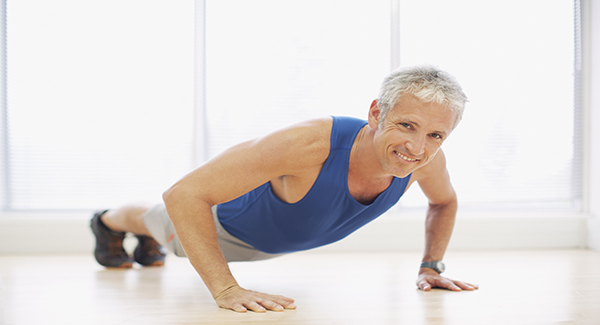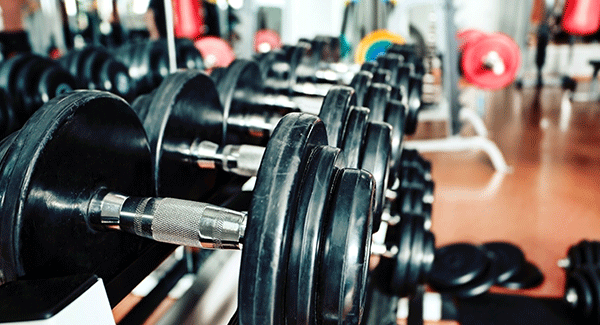Developing a Well-Rounded Workout
Your primary care physician recommends walking to get your weight down. Your physical therapist has you using weights to strengthen the muscles around certain joints. Your rheumatologist says stretching can increase your range of motion. They’re not contradicting each other – a balanced program of aerobic conditioning, strengthening and stretching can greatly help to reduce arthritis pain and improve your overall fitness and health.
The Facts About Well-Rounded Exercise
Consider these fundamental facts about various exercise types and how to safely add them to your routine:
Aerobic Fitness
Aerobic workouts require a high level of endurance. You should be able to exert yourself without becoming winded. The lungs take in more oxygen, the heart pumps more blood to spread that oxygen throughout your body, and the body converts the oxygen into energy more efficiently. Getting your heart pumping may make you sweat, but the effort will reward you with improved metabolism, better mood, more energy, increased stamina, and, as studies show, decreased inflammation, which can help minimize arthritis symptoms.
What to do: Aquatic exercise, cycling, swimming, walking.
What not to do: High-impact aerobics or running without your doctor’s approval.
Muscular Fitness
Strength training makes your joints more stable. Strong muscles help keep bones positioned properly, and building muscle through weight-bearing exercise increases bone density, decreasing your risk for osteoporosis and fractures.
What to do: Lift light dumbbells or soup cans; use resistance bands or tubing; stand in a pool and push against water; or try Pilates. Do slow, controlled movements, concentrating on proper form.
What not to do: Do not over train by lifting too much weight or performing too many repetitions or sets of exercises. Do not jerk weighted items quickly.

Movement Really Matters
Flexibility Fitness
The “use it or lose it” mantra definitely applies to muscle flexibility. To decrease daily joint stiffness and maintain or improve range of motion in joints, you need to stretch. To minimize muscle soreness after training with weights, squeeze in a few stretches between sets. Stretching muscles while they are warm reduces injury.
What to do: Yoga and tai chi are good flexibility workouts, but be sure to also do basic hamstring, shoulder, neck and back stretches. Simply reaching for the sky and your toes is beneficial.
What not to do: Don’t bounce when you hold a stretch or forget to stretch after a warm-up or finishing a workout.
Set Realistic Goals
Just starting a program? Build your exercise routine slowly in five- to 10-minute blocks of time, working up to 30 minutes total. Exercise time is cumulative so you don’t need to worry about doing it all at once. Three 10-minute sessions throughout the day are as effective as one 30-minute session. Already active? If you are regularly getting 30 minutes of physical activity on most days of the week, start adding time to existing workouts gradually. Add anywhere from two to 10 minutes at a time. As you become comfortable with your longer routine, continue to add minutes to build endurance, strength and flexibility. But be sure to build in rest days to allow your body to recover.

Stay in the Know. Live in the Yes.
Get involved with the arthritis community. Tell us a little about yourself and, based on your interests, you’ll receive emails packed with the latest information and resources to live your best life and connect with others.


